There is something about samurai warriors that conjure up every corner of our imagination. Your age or sex doesn’t matter; it’s the thought of dozens of skilled warriors battling it out with thick wooden sticks, sharp swords, and body armor made from ancient craftsmen that feed that fire. Granted, adults of a certain age may also channel their inner samurai with a set of Ginsu Knives. More cerebral folks might study Japanese history and the evolution that samurai had over hundreds of years in Japan. Samurai: Armor from the Collection of Ann and Gabriel Barbier-Mueller is on display until September 17, 2023, at High Museum of Art and is an exhibition that will entertain all of those camps and more.
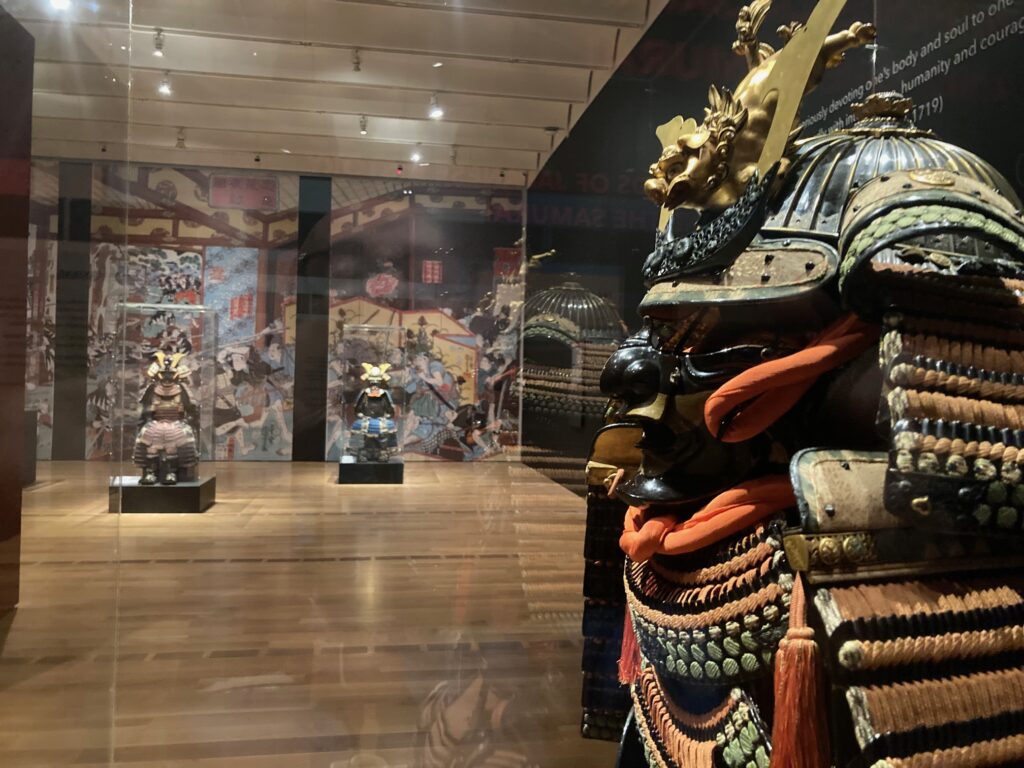
In the Venn Diagram of my mind’s eye, I wanted to see the armor of where ninja and samurai intersect. Samurai does not have this mythical garb, but the reality of what you can see is much more magical. We saw the exhibition with our 11-year-old son who goes mental over anything ninja and gamely entertains me when I tell him stories of when I lived in Japan.
Having walked through Samurai: Armor from the Collection of Ann and Gabriel Barbier-Mueller several times, the biggest takeaway that attendees can come away with is the detail. That’s a bit ironic because this is one of the largest collections of samurai armor that is outside of Japan. The exhibit is wonderfully paced to where the number of objects is impressive but is spaced out adequately enough so that each piece has room to breathe.
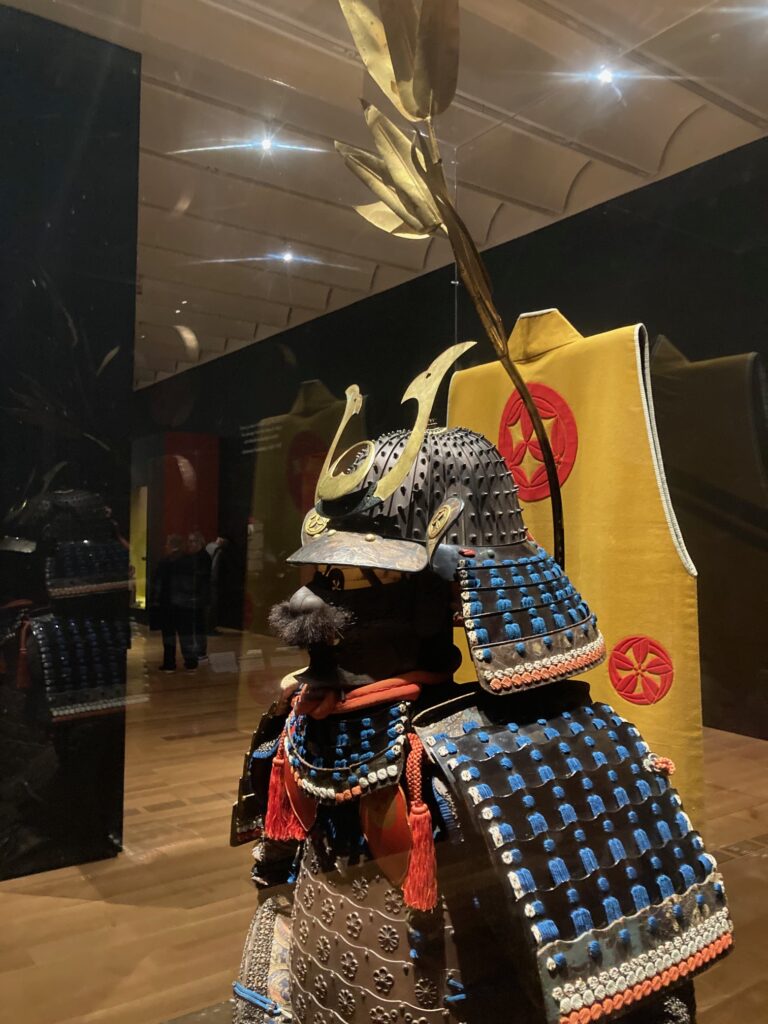
The age of the various pieces in the Samurai collection at the High Museum of Art spans just shy of nine centuries old. When I was impressing that wide range to our 11-year-old he found it challenging to process. Some of these objects date back almost 900 years, whereas others had modern characteristics or attributes. One of the samurai pieces of chest armor is adorned with a couple of tell-tale pings from the rifles of Westerners. That’s one of the many examples of minute details that lend weight to the intricacies of how ornate, and purposeful, each creation is.
There are about 20 complete sets of armor. When you enter the main room you’ll see four samurai who are completely covered, head-to-toe in armor. As you pass them and enter the back part of that room you’ll see three samurai who are on ceramic horses, who also have armor on them. Samurai means those who serve, and in addition to being the more elite warriors, they also were the scholars and poets of their area. They also were at the right hand of those who ruled each respective area of Japan.
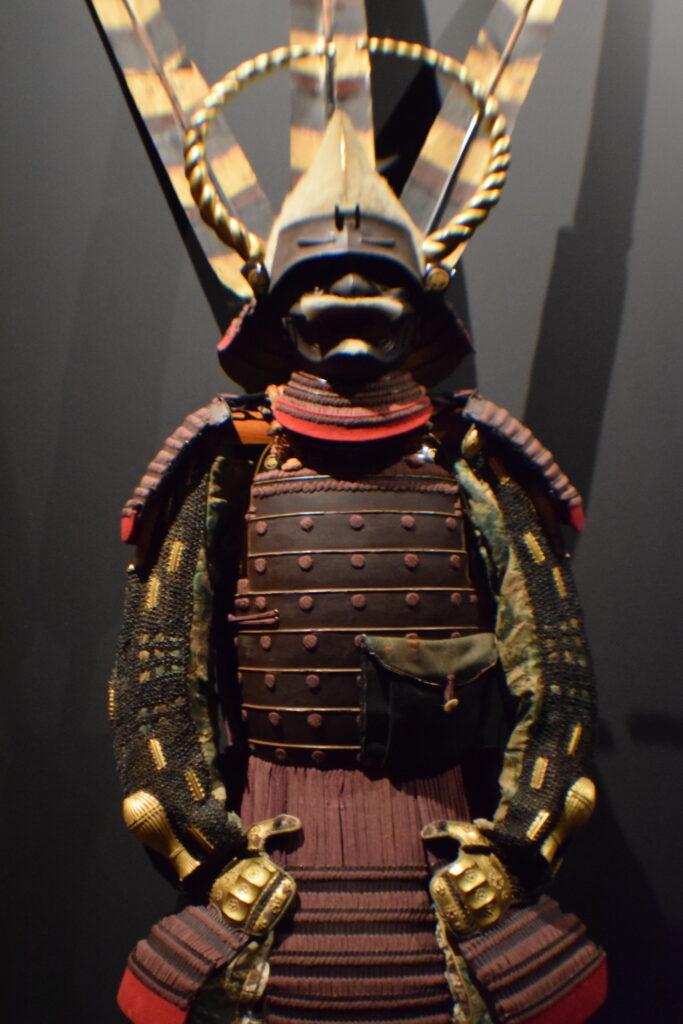
It’s amazing to see the samurai armor up close and realize that some of it is just wood. So, you’re looking at a warrior suit that’s been in battle with key wooden components that are over 600 years old. My wooden end table on the back porch is withering away after a couple of years, how is it that this battle-hardened suit was able to fit warriors as they engage in up-close combat, and still looks this good?
When you visit Samurai be sure to look at the details. You’ll see family crests in the armor, helmets that are cut from a single sheet of iron, helmets that resemble Poke Mon characters but were crafted that way in order to intimidate others, and weapons that were forged through hundreds of hours in the heat.
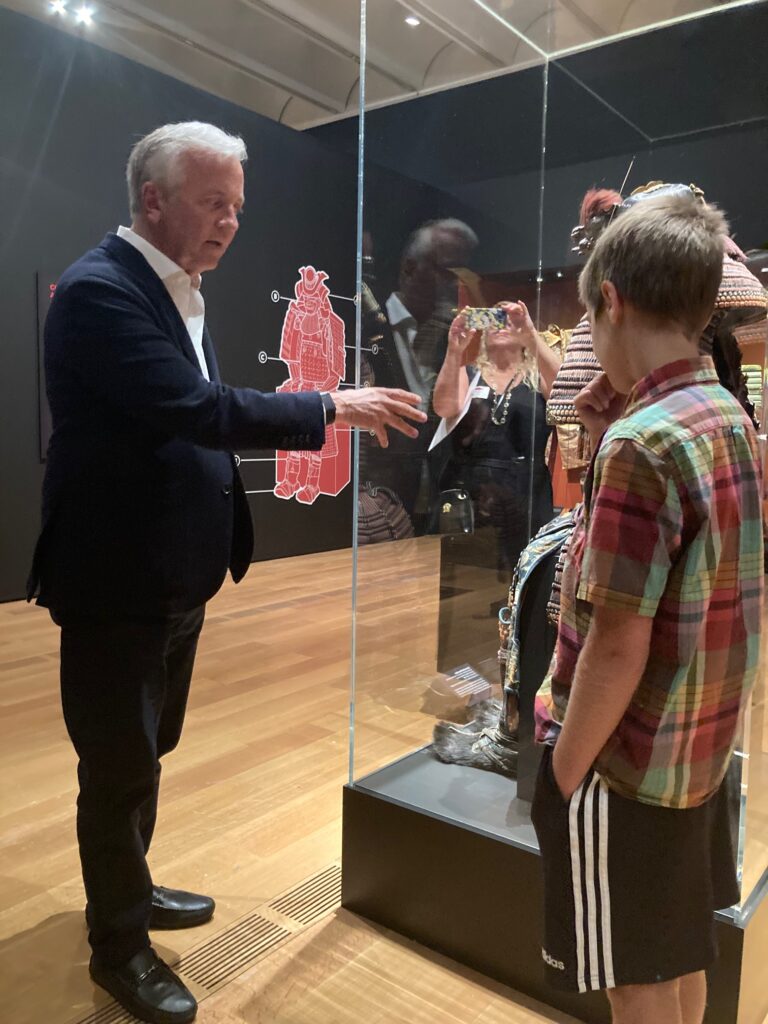
Samurai: Armor from the Collection of Ann and Gabriel Barbier-Mueller is at a museum, but it’s an exhibit that transcends museum kids. There are some kids who really enjoy going to a museum. There are some kids who associate museums with boring things that they don’t find interesting. “More swords”, said our 11-year-old non-museum kid, “but, I really liked seeing all of the armor, especially the room where they had the swords.” He’s nothing but subtle, isn’t he?
However, even before I asked him his opinion on Samurai, he had dozens of questions on his own. Because I am not a samurai expert, he found the closest High Museum of Art employee and proceeded to pepper her with umpteen questions about all things samurai. But, as we walked around the rooms some more he had more specific questions about the artifacts.
I was drunk with the same kind of Indiana Jones curiosity when I was his age too, so I completely knew where he was coming from. This was the media preview for Samurai: Art from the Collection of Ann and Gabriel Barbier-Mueller and we were fortunate enough to have Mr. Gabriel Barbier-Mueller just a couple of feet beside us. This is where the fearless ability of an 11-year-old to question people that he has no idea who they are can come in handy.
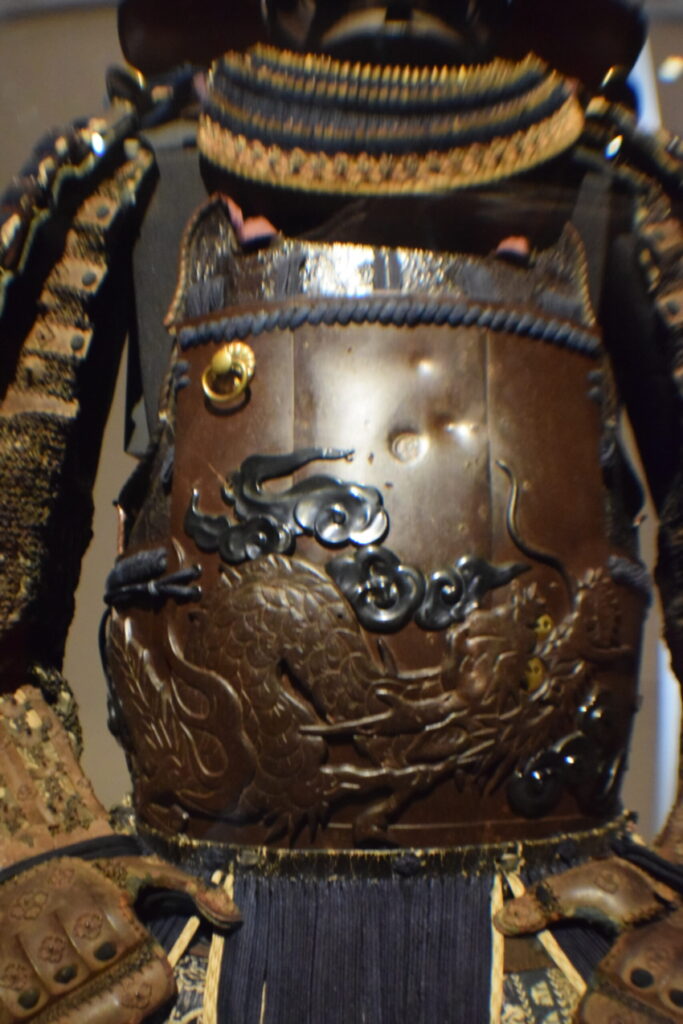
It’s important to mention that he walked up to Mr. Barbier-Mueller and prefaced his questions with, “Excuse me.” And before the founder and CEO of Harwood International could mutter an introduction he was asked all manner of run-on sentences that somehow morphed into a very long question. Where did you get all of these from, do they all belong to you, how old are they, are they real a handful of others proceeded to spew from his mouth without any logical break in his questioning or waiting for him to answer.
I boiled Mr. Barbier-Muller’s answers down through my Rosetta Stone for an 11-year-old answer to “he collects stuff that samurai warriors had, kind of like you collect empty Prime bottles.” While I regretted that comparison on a cultural and personal level, it resonated with my son. On the way home he was kicking around the idea of collecting something ancient and respectable that people would want to see in thousands of years.
Samurai: Armor from the Collection of Ann and Gabriel Barbier-Mueller is on loan to High Museum of Art through September 17, 2023. If you want to get your samurai fix anytime it strikes you, The Ann & Gabriel Barbier-Muller Museum: The Samurai Collection is on display full-time in the Hardwood District in Dallas, Texas.

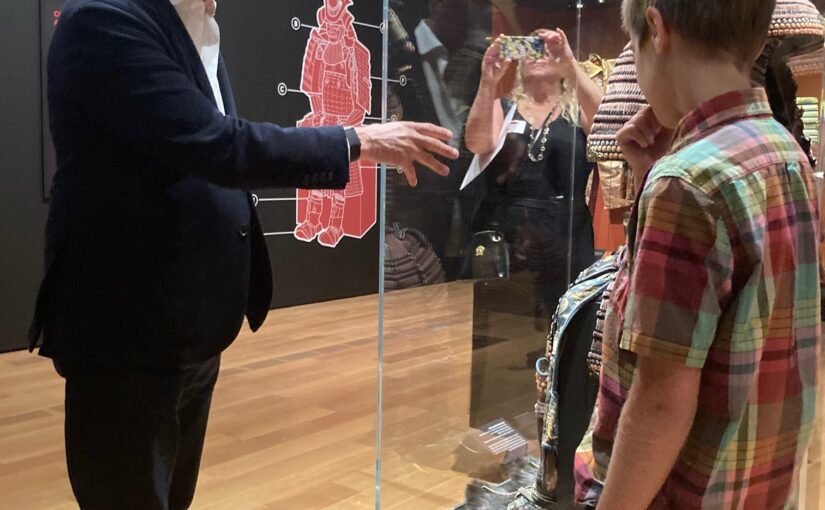



 Facebook
Facebook Twitter
Twitter Flickr
Flickr GooglePlus
GooglePlus Youtube
Youtube